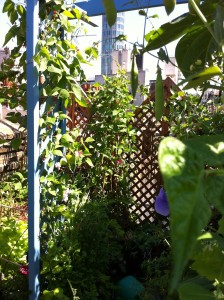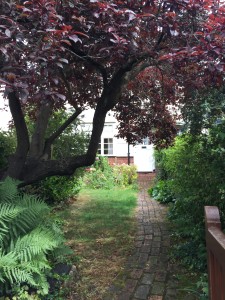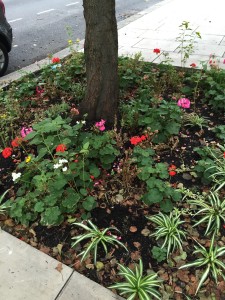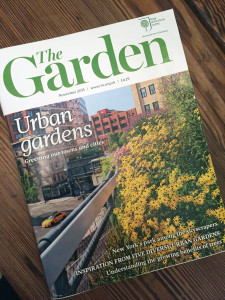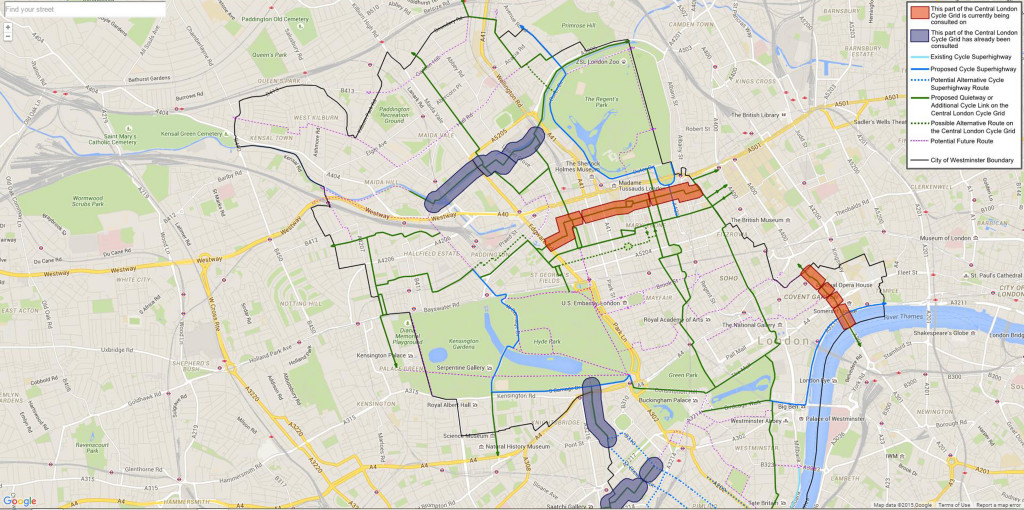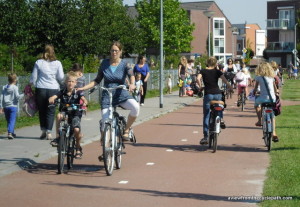
In The Green
This week I have been thinking about the environmental benefit of roof gardens and edible gardens in particular. My thoughts have been driven by two very different events. The first is that the West End Partnership have been adding flesh to the bones of their plans for London’s West End. As a member of their Peoples Task Group, I needed to consider, among other topics, what their emerging greening strategies might mean for people who work here, live here or visit Fitzrovia.
And in another, completely unconnected event, my own rooftop garden features in this month’s Garden Magazine, the organ of the Royal Horticultural Society(RHS). It is a special issue devoted to urban gardens.
If you are not a member of the RHS then this might be a good time to join. The organisation is slowly becoming a little more progressive and organic gardening, protection of wildlife and greening the urban realm are now all on their agenda. People like me, who do not own acres of manicured evergreens somewhere in the Dukeries, are now welcomed. I’m rather proud that a productive, urban, organic garden, the size of a postage stamp is featured within the hallowed pages.
The RHS is taking a number of excellent initiatives that the most progressive of urban gardeners and the most devoted of environmentalists would approve. In this issue November 2015, the magazine is suggesting how we can find space and place to plant more. Their ‘Greening Grey Britain’ initiative.
The RHS are right on the button when they say that gardens play a crucial role in urban and suburban areas, and potentially will become even more important in the future as our climate changes. From helping protect us against flooding and extremes of temperature, to supporting wildlife and helping gardeners to be healthy, gardens can provide an amazing range of benefits.
https://www.rhs.org.uk/science/gardening-in-a-changing-world/Greening-Grey-Britain/urban-planting
The estimate is that 25% of the urban realm is open space, that might be transformed into a garden. That could be a formal flower garden, a wild space, a flowering place for pollinators or an allotment. Gardens can be at ground level, on balconies or on rooftops. Temporary gardens can be found on building sites. So called guerrilla gardens can spring up anywhere. We have our own guerrilla gardens in Great Titchfield Street, started by one of the flat dwellers in Collingwood House. The idea has proved infectious, the space around trees in the street have been invaded by flowers right up as far as the restaurant Conchiglia and the Smile Clinic. Well done to those businesses for taking up the initiative. It’s a great pleasure to walk down that part of the street now. (Though I despair at the number of cigarette butts I see casually tossed into flower beds.)
My own contribution to greening the city is a rooftop vegetable plot, designed to be intensively productive all year round as well as beautiful. It is organic, and full of flowering produce as well as leaves and roots. I have bee hotels up there, a stick tower for insects and several bird feeders and nesting boxes. You can find the article in this month’s RHS magazine, or in the recently published book, ‘My Tiny Veg Plot’ by Lia Leendertz. Pavillion, Books 2015. This lavishly illustrated book is an excellent resource for different urban/small space gardening techniques.
As part of the FitzWest Neighbourhood Plan we will be looking at how we can improve the urban space. That’s about reducing deliveries, traffic calming and improving space for pedestrians and cycles. It’s about improving our rubbish collection system so that the streets are no longer strewn with take-away cartons and banana skins. It’s about management of contractors and street diggers, so that builders rubble, skips and cranes don’t litter the streets, causing danger to pedestrians and blocking carriageways. And it’s also about finding more places for planting.
A survey of green space in FitzEast has already been completed for the Business Improvement District. This is an issue that touches those who work or visit the area as much as it does residents. We need something similar in FitzWest.
if you would like to join FitzWest please visit this page of the website:
https://fitzwest.org/become-a-member/
And if you’d like to help with the survey of public space and greening of FitzWest email me, Wendy Shillam on info@fitzwest.org

